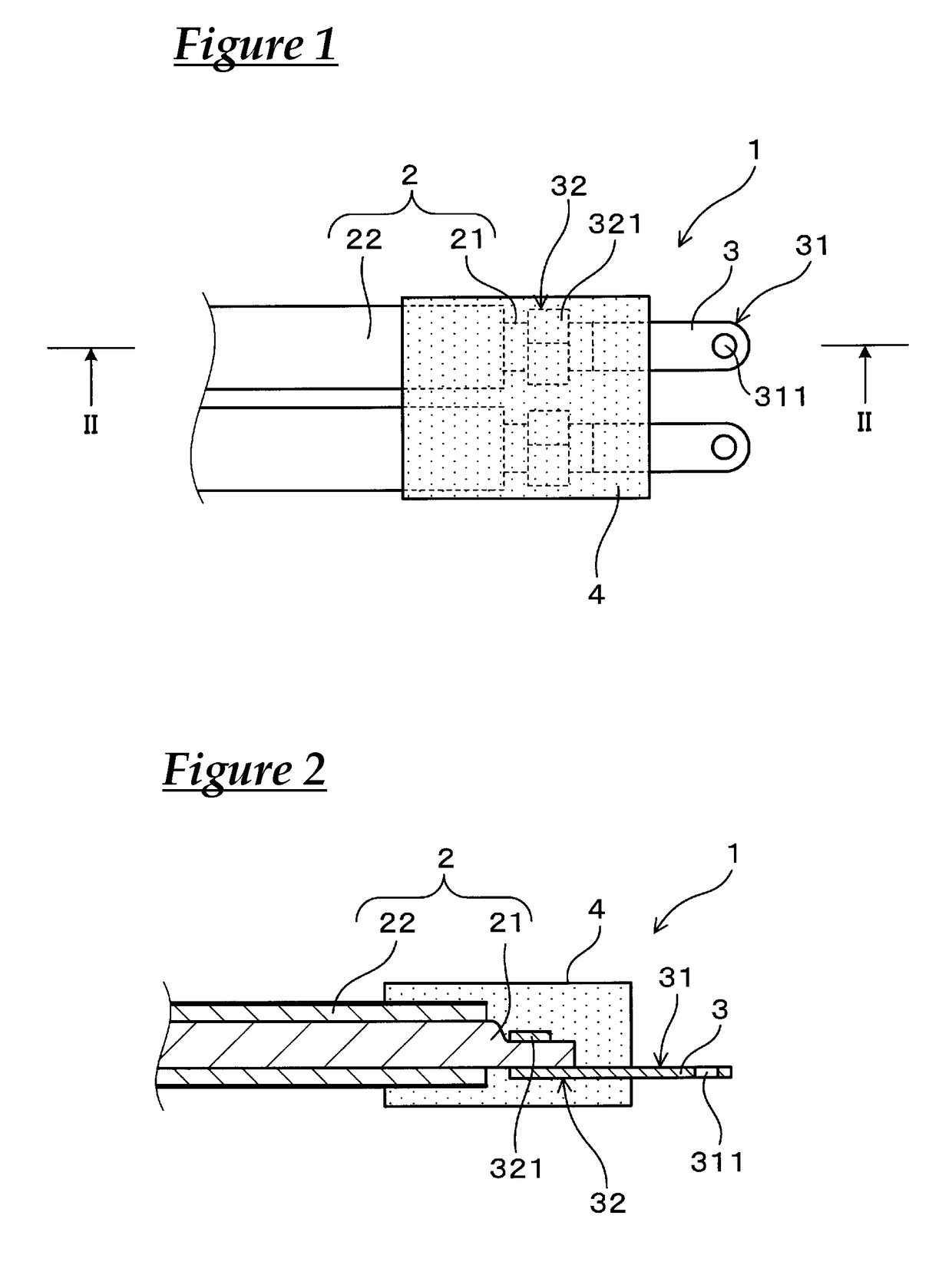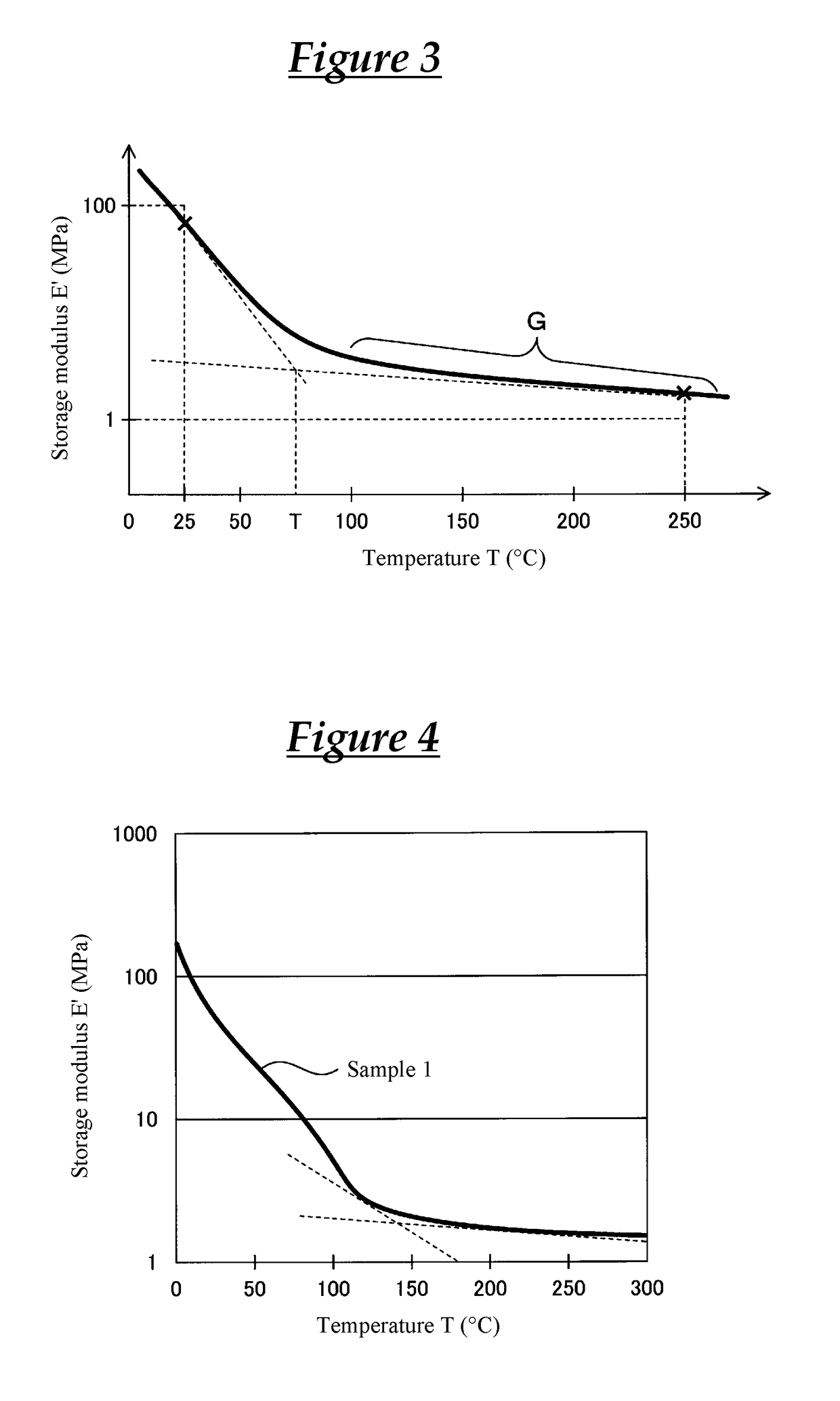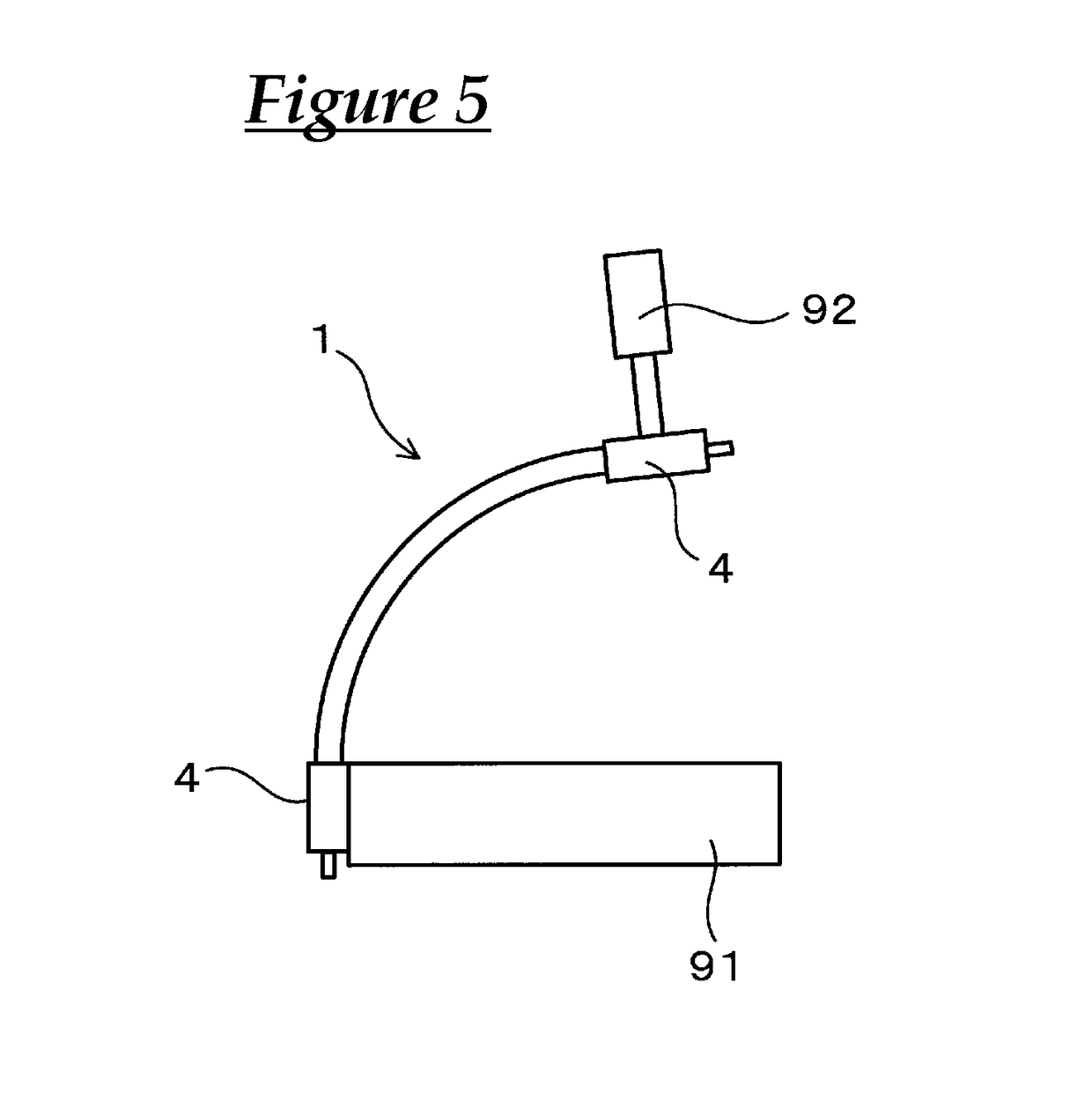Wire harness
a wire harness and wire technology, applied in the direction of insulated conductors, cables, coupling device connections, etc., can solve the problems of insulator will fracture in some cases, and achieve the effects of high storage modulus, reduced insulator prone to fracture, and sufficient flexibility
- Summary
- Abstract
- Description
- Claims
- Application Information
AI Technical Summary
Benefits of technology
Problems solved by technology
Method used
Image
Examples
working examples
[0026]Hereinafter, wire harnesses of working examples will be described with reference to the drawings.
working example 1
[0027]A wire harness of Working Example 1 will be described with reference to FIGS. 1 to 3. As shown in FIGS. 1 to 3, a wire harness 1 of this example has electric wires 2, terminals 3, and a molded resin portion 4. In this example, the wire harness 1 is used to connect an inverter and a motor in an automobile (not shown) provided with the inverter and the motor. Also, in the drawings, an example is shown in which the wire harness 1 has a plurality of electric wires 2 and a plurality of terminals 3.
[0028]The electric wires 2 each include a conductor 21 and an insulator 22 that coats an outer periphery of the conductor 21. In this example, the conductor 21 is constituted by a twisted wire obtained by twisting a plurality of wires (not shown). The wire is made of a copper alloy plated with tin. The cross-sectional area of the conductor is 20 mm2. The insulator 22 is constituted by a crosslinked polyethylene. The thickness of the insulator 22 is 1.1 mm. The insulator 22 is removed from...
experimental examples
Production of Samples
[0033]As shown in Table 1, electric wires that were coated with insulators whose moduli have different properties (different storage moduli E) and that had terminals crimped to their terminal ends were prepared. The cross-sectional area of the conductors of the electric wires was 20 mm2. The insulators in Samples 1 to 4 and Samples 1C to 4C were all constituted by crosslinked polyethylene. The insulator in Sample 5 was constituted by silicone. Note that the property of the storage modulus E′ was changed by adjusting the type, the blending ratio, the degree of crosslinking, or the like of resins in the insulator formation materials. Also, a dynamic viscoelasticity measurement device “DMA2980” manufactured by TA Instruments was used to measure the storage modulus E. The measurement mode was a tensed mode, the temperature increase rate was 5° C. / min, and the frequency was 10 Hz. Also, the measurement atmosphere was air, and the measurement temperature range for the...
PUM
| Property | Measurement | Unit |
|---|---|---|
| temperature | aaaaa | aaaaa |
| temperature | aaaaa | aaaaa |
| temperature | aaaaa | aaaaa |
Abstract
Description
Claims
Application Information
 Login to View More
Login to View More - R&D
- Intellectual Property
- Life Sciences
- Materials
- Tech Scout
- Unparalleled Data Quality
- Higher Quality Content
- 60% Fewer Hallucinations
Browse by: Latest US Patents, China's latest patents, Technical Efficacy Thesaurus, Application Domain, Technology Topic, Popular Technical Reports.
© 2025 PatSnap. All rights reserved.Legal|Privacy policy|Modern Slavery Act Transparency Statement|Sitemap|About US| Contact US: help@patsnap.com



